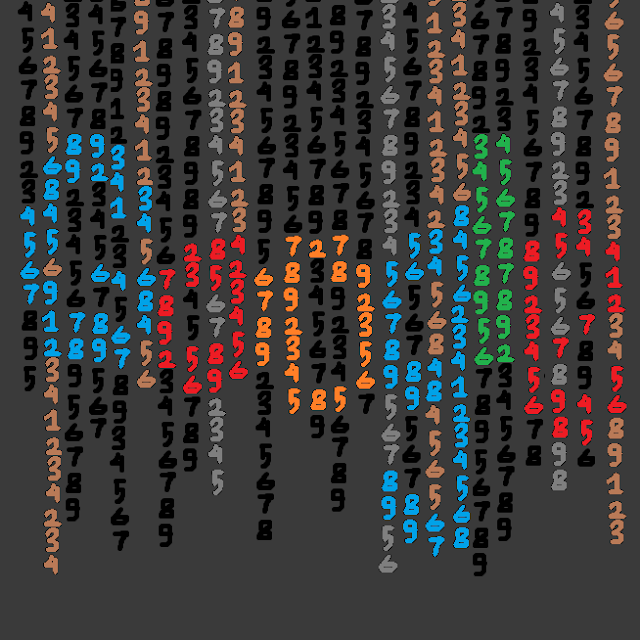How to Start a Piano Blog or YouTube Channel - A Journey from Passion to Platform - Blog No. 113
It started with a single note. Maybe it was the nostalgic echo of Clair de Lune, the jazzy bounce of an Oscar Peterson solo, or the heartfelt simplicity of a game soundtrack like To Zanarkand. You sat at your piano and played. Then one day, you thought—what if I could share this with the world?
Welcome to the beginning of your piano content creation journey.
In this post, we’ll guide you step by step on how to start a piano blog or YouTube channel, blending personal passion with professional tips, and weaving in SEO and growth strategies to help your audience find you.
Related
1. Define Your “Why” 🎯
Before you record your first video or publish your first blog post, ask yourself: Why do I want to do this?
-
Do you want to share your piano journey as a beginner?
-
Do you want to teach piano online?
-
Do you want to post cover videos of your favorite soundtracks or pop hits?
-
Or perhaps explore music theory, gear reviews, or piano history?
Defining your “why” helps you choose your niche and keeps you motivated long after the initial excitement fades.
Example Story:
Jason, a classical pianist from Toronto, started his blog after being laid off during the pandemic. What began as a diary of his daily practice turned into a rich resource for adult learners. Today, “Jason’s Keys” gets over 20,000 visits a month.
2. Choose Your Platform: Blog, YouTube, or Both? 📹📝
Both blogs and YouTube channels have their strengths. Let’s explore:
✅ YouTube Channel: Ideal If You Love Performance and Teaching
-
Visual & audio medium – perfect for performance videos, tutorials, and reactions.
-
Great discoverability through YouTube’s algorithm.
-
Monetization through ads, affiliate links, and memberships.
✅ Piano Blog: Ideal If You Enjoy Writing and Want SEO Power
-
Easier to rank in Google with long-tail keywords like “best digital pianos for beginners 2025.”
-
Can include sheet music downloads, reviews, and in-depth thought pieces.
-
Monetization through affiliate links, display ads, eBooks, or course sales.
Pro Tip: Why not both? Many successful creators start with one and expand. You can embed YouTube videos in blog posts or use blog traffic to drive video views.
3. Find Your Piano Niche 🎵
The piano world is vast. Niching down helps you attract a loyal audience. Here are ideas:
| Niche Type | Examples |
|---|---|
| Piano Tutorials | “How to Play Jazz Chords for Beginners” |
| Cover Channel | Video game music, anime themes, lo-fi chill piano |
| Gear Reviews | Comparing digital pianos, MIDI controllers, headphones |
| Piano for Adults | “Learning Piano at 40: My 6-Month Progress” |
| Music Theory Blog | “Circle of Fifths Explained (With Real Piano Examples)” |
| Storytelling & Essays | “What Beethoven Taught Me About Depression” |
| Behind the Scenes | Vlogging practice routines, composing sessions |
Tip: Start specific. You can always expand later.
4. Set Up Your Tools and Branding 🛠️
For a Blog:
-
Domain Name: Use something memorable and piano-related. Example:
PianoWithEmma.comorTheLoFiKeys.com -
Hosting: Bluehost, SiteGround, or WordPress.com are great starting points.
-
Theme: Choose a clean, mobile-friendly theme. Astra, Neve, or GeneratePress work well.
-
Essential Plugins: Yoast SEO, WPForms, PrettyLinks (for affiliate tracking), Google Site Kit.
For a YouTube Channel:
-
Channel Name: Keep it short and searchable. “Keys by Kira” or “Game Piano Covers”
-
Intro & Outro: 5-second brand animation or static intro helps build recognition.
-
Video Equipment:
-
🎤 Audio: A good mic like the Zoom H1n or Rode NT-USB is crucial.
-
📷 Camera: A smartphone with decent lighting works fine to start.
-
💡 Lighting: Softbox lights or a ring light = instant upgrade.
-
Brand Tip: Choose a consistent color palette and font across your thumbnails, blog, and social media. This builds trust and familiarity.
5. Start Creating Content 🎬📝
Here’s the secret: Don’t wait for it to be perfect. Start messy.
Your First Blog Posts Could Be:
-
“My Favorite Free Sheet Music Sites for Piano”
-
“What I Learned in 30 Days of Playing Piano Every Day”
-
“Best Budget Digital Pianos in 2025 (With Sound Demos)”
Your First YouTube Videos Could Be:
-
A simple cover of your favorite tune
-
A talking-head intro video: “Welcome to My Piano Channel!”
-
A tutorial: “3 Easy Chord Progressions for Beginners”
Story:
Sarah, a self-taught pianist, filmed her first YouTube video with a webcam and blanket over her keyboard to hide the mess. Today, her channel “Piano & Tea” has over 100K subscribers.
6. Master Basic SEO (Search Engine Optimization) 🔍
If you want people to find your content organically, SEO is essential.
Blog SEO Tips:
-
Target Long-Tail Keywords: Instead of “piano,” try “how to play jazz piano chords beginner.”
-
Use Headings (H1, H2, H3): Helps both readers and Google understand your content.
-
Meta Description: A 155-character summary with keywords.
-
Internal Linking: Link to your own posts to increase time-on-site.
YouTube SEO Tips:
-
Title: “How to Play Persona 5 Piano Theme (Beginner Tutorial)”
-
Description: Use relevant keywords, links to gear, your blog, and socials.
-
Tags: Add relevant tags like “video game piano cover” or “anime piano.”
-
Thumbnails: Make them clear and eye-catching with large fonts and emotion.
7. Grow Your Audience 📈
Once your content is live, it’s time to build a community.
Share on Relevant Platforms:
-
Reddit: r/piano, r/pianolearning, r/wearethemusicmakers
-
Facebook Groups: Join adult piano learner communities and niche music groups
-
Discord: Many music servers have self-promotion channels
-
Pinterest: Great for blog traffic—pin images of your sheet music, gear reviews, or practice tips
-
Instagram Reels / TikTok: Clip your videos for quick content
Build an Email List:
Use tools like ConvertKit or Mailchimp to collect emails and update your fans about new blog posts or video uploads.
Freebie Ideas:
-
“Download My Free PDF: 5 Must-Know Chord Progressions for Pop Piano”
-
“Free Lo-Fi Practice Playlist + Sheet Music”
8. Monetize Your Content 💸
You don’t need a million followers to earn money. Even a small, loyal audience can support your piano journey.
Monetization Options:
| Method | Description |
|---|---|
| YouTube AdSense | Revenue from ads shown on your videos |
| Affiliate Marketing | Earn commissions by linking to gear, courses, or sheet music (e.g., Amazon) |
| Merchandise | T-shirts, mugs, or practice journals with piano graphics |
| Online Lessons | Offer one-on-one Zoom lessons or sell digital courses |
| Patreon/Ko-fi | Offer behind-the-scenes content or early sheet music access |
| eBooks & Sheet Music | Sell arrangements, guides, or original compositions |
Example:
David, a lo-fi piano YouTuber, earns $800/month through Patreon by offering early access to his game music sheet transcriptions.
9. Learn and Iterate 🧠
Every great creator started small and got better over time.
-
Watch your analytics: Which posts or videos perform best?
-
Ask your audience: “What song should I cover next?”
-
Study other creators: What do they do well?
Don’t compare your day 1 to someone else’s year 5. Each post, each video, and each comment is a step forward.
10. Stay Consistent and Celebrate Small Wins 🎉
Most creators give up because they expect fast results. The real secret? Show up consistently.
Whether you post once a week or twice a month, stick to a rhythm. Over time, your voice, playing, and presence will shine through.
Celebrate Milestones:
-
First blog comment
-
First 100 YouTube views
-
First affiliate sale
-
First email subscriber
These are not small—they are signs that your music is reaching someone.
Related
Final Notes: Your Audience Is Waiting
Starting a piano blog or YouTube channel isn’t just about algorithms or aesthetics. It’s about connection. There’s someone out there searching for that exact piece you love, that tutorial you recorded, or that blog post about overcoming stage fright.
They’re not looking for perfection.
They’re looking for realness. Passion. A fellow piano traveler.
So open your laptop. Sit down at your keyboard. Hit “record” or “publish.”
Let your journey begin.



Comments
Post a Comment